离子液体(Ionic Liquid)是由有机阳离子和无机或有机阴离子构成的在室温下呈液态的有机盐,通常可称为室温离子液体(Room-temperature Ionic Liquid)。
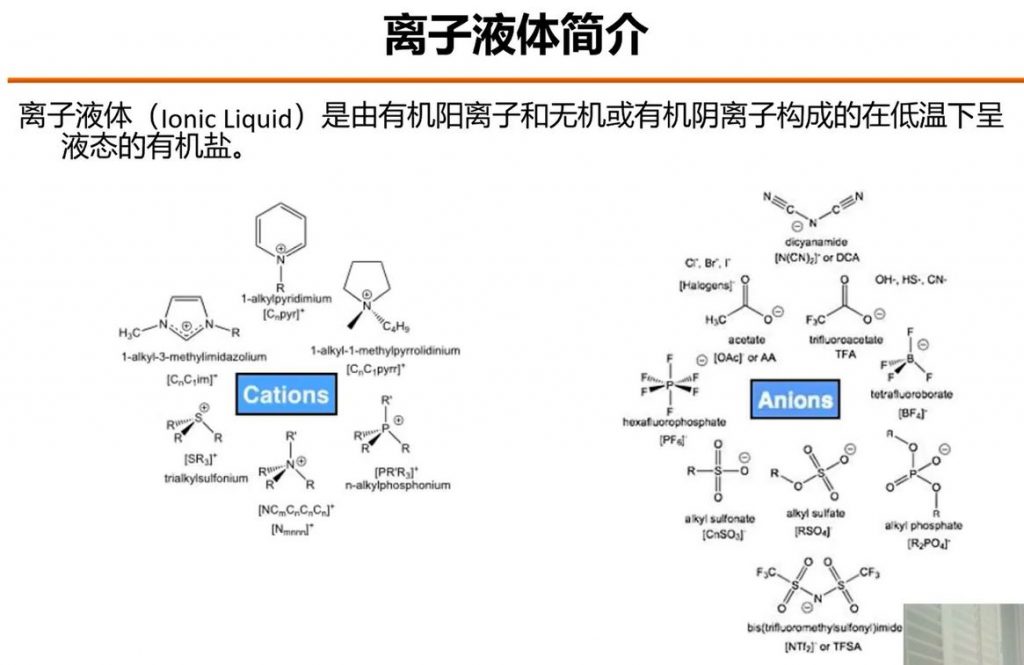
诺为离子液体阻燃剂
离子液体材料可以通过结构设计阻燃元素磷、氮、硫等,以取得最优的阻燃效果
离子液体不挥发,是真正的绿色产品
离子液体由于其离子特性,不会有很强的增塑副作用
离子液体阻燃剂的结构可以根据不同的塑料结构,引入不同的官能团进行修饰
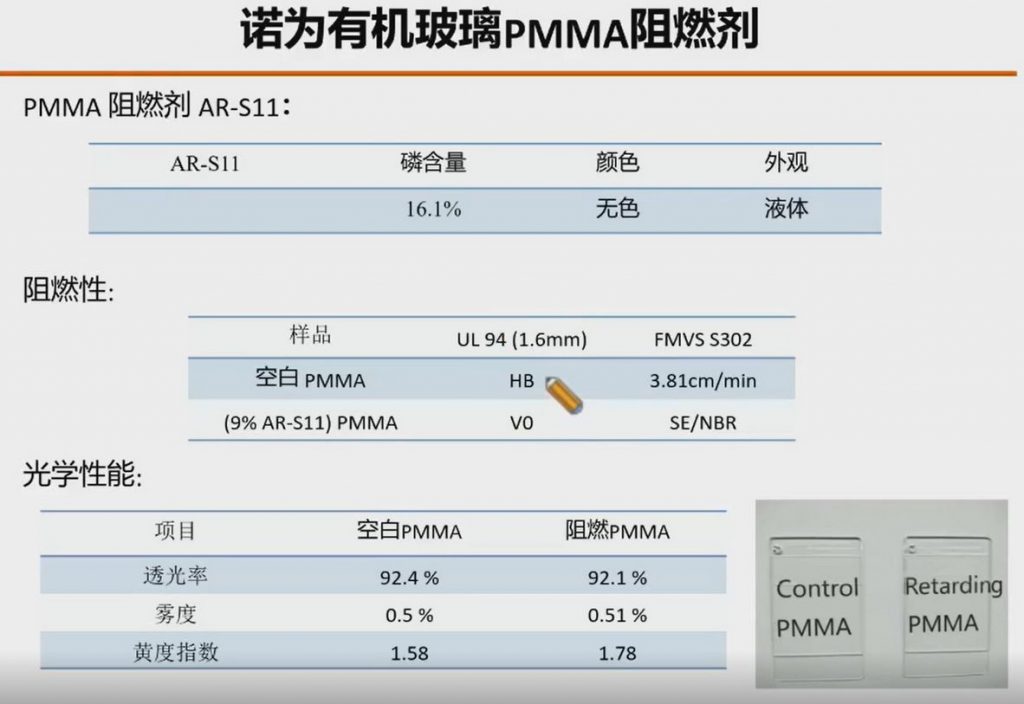
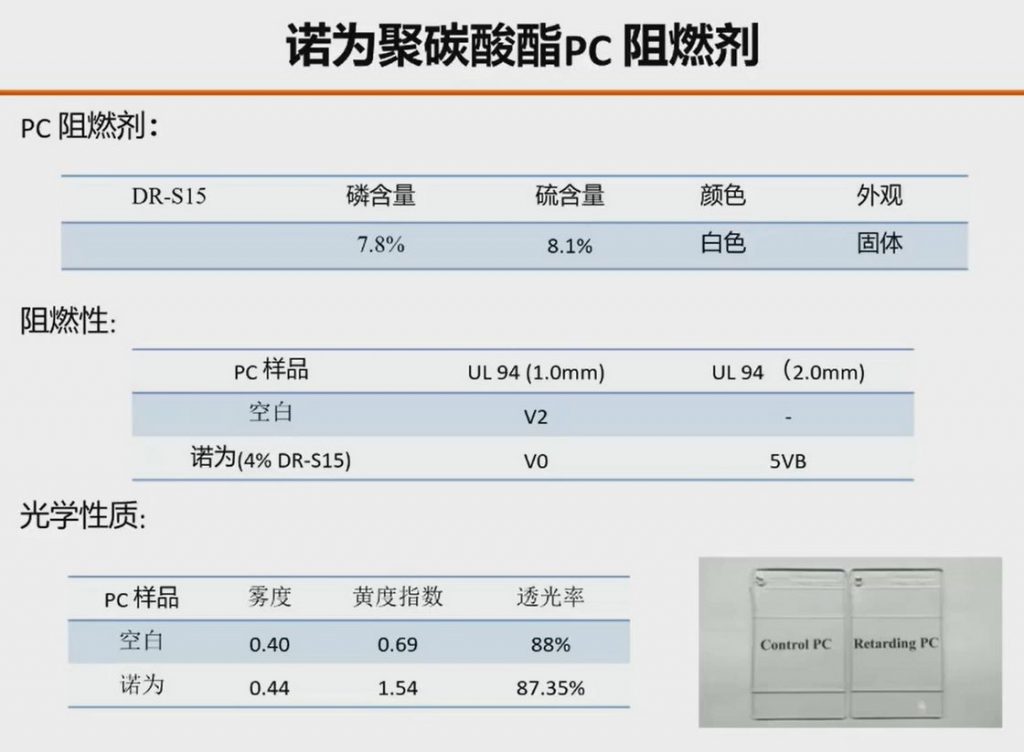
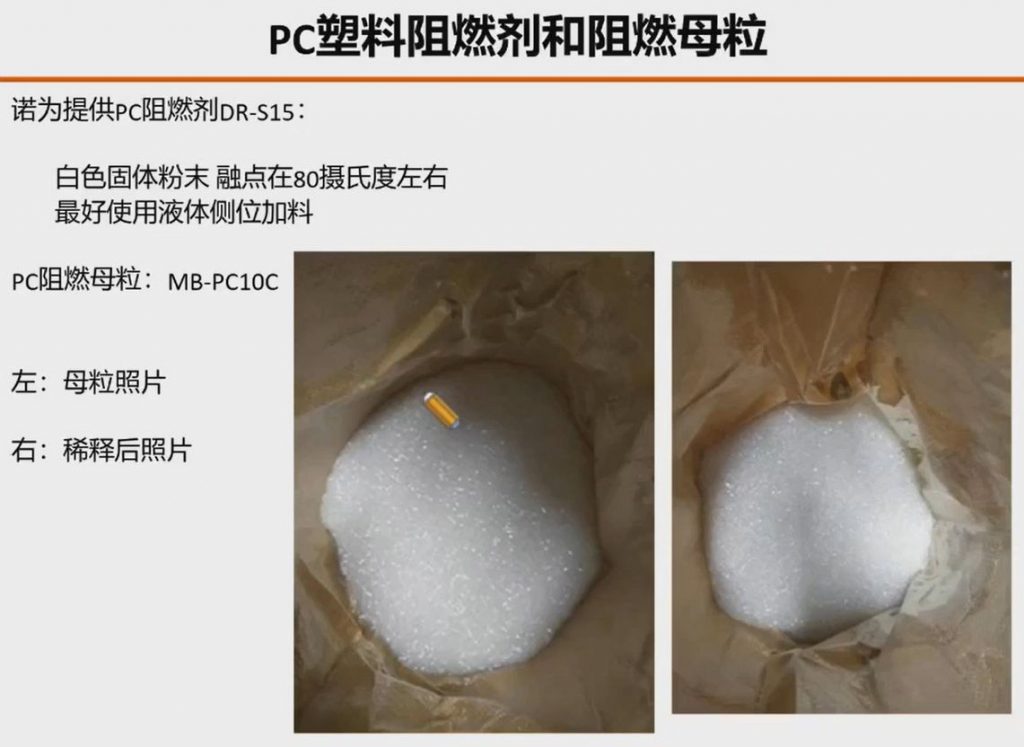
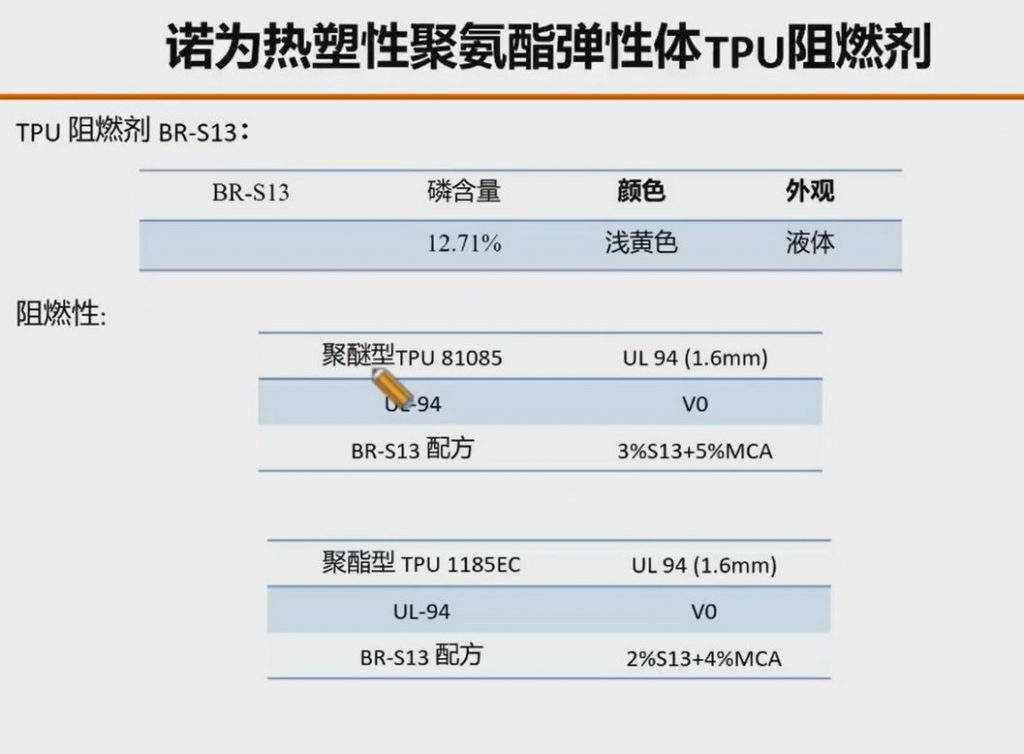
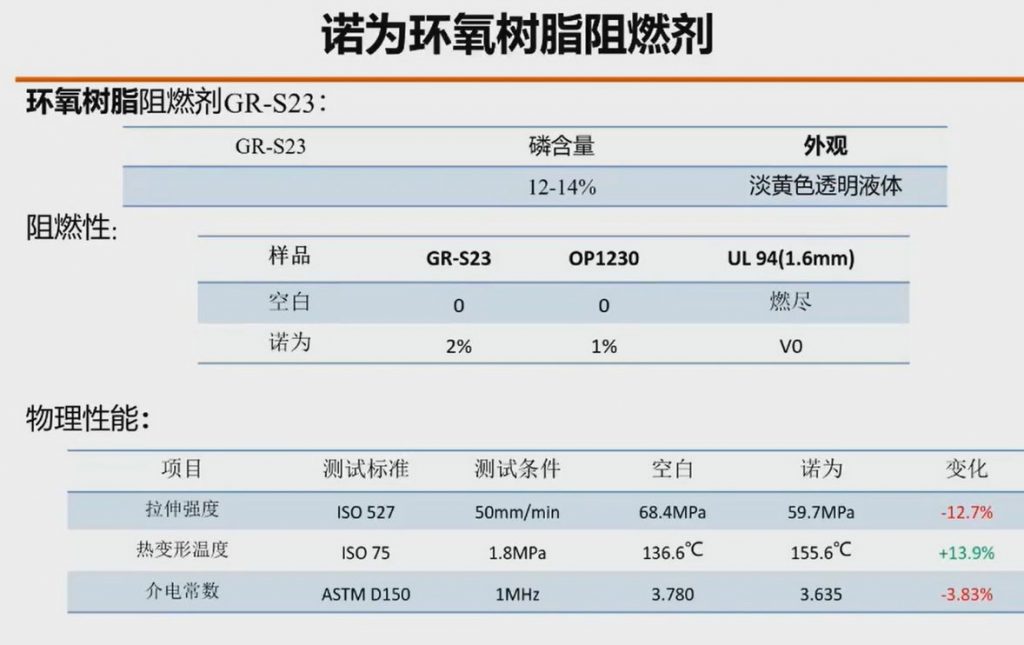
*诺为新材料
Fire test
离子液体(Ionic Liquid)是由有机阳离子和无机或有机阴离子构成的在室温下呈液态的有机盐,通常可称为室温离子液体(Room-temperature Ionic Liquid)。

诺为离子液体阻燃剂
离子液体材料可以通过结构设计阻燃元素磷、氮、硫等,以取得最优的阻燃效果
离子液体不挥发,是真正的绿色产品
离子液体由于其离子特性,不会有很强的增塑副作用
离子液体阻燃剂的结构可以根据不同的塑料结构,引入不同的官能团进行修饰





电子电气产品主要使用阻燃材料,以确保在电气故障引起的火焰点燃情况下具有良好的性能。几十年来,卤素基材料以高性能和成本效益着称,但 ROHS 强调了二十年前第一代卤化阻燃剂的毒性,最近一些氯化和溴化阻燃剂被列入 Reach SVHC 清单和整个 BFR /CFR 系列包含在 IEC 62474 数据库的标准 3 列表中。此外,施耐德电气还收到来自世界某些地区,主要来自欧洲的对无卤产品的市场需求。此外,当技术解决方案确实存在时,施耐德电气正在考虑用非卤化替代品替代卤化阻燃剂基材料的可能性,以避免未来可能面临限制的昂贵材料认证。自本世纪初以来,这些替代品正在缓慢改进,但在某些情况下,这些替代品在成本、脆性或腐蚀性方面仍面临一些缺点。仍需通过研发研究改进替代性,寻找基于协同效应或技术组合的突破性解决方案,而不是渐进式创新。
E&E products are mainly using flame retarded materials to ensure a great behavior in case of flame ignition induced by electrical fault. Halogen based materials are known from decades to be highly performant and cost efficient but ROHS highlighted the noxiousness of first generation of halogenated flame retardant twenty years ago and more recently some chlorinated and brominated flame retardants were included in Reach SVHC list and the whole BFR/CFR families were included in criteria 3 list of IEC 62474 database. In addition, Schneider Electric is receiving market requests for Halogen Free products from some part of the world and mainly from Europe. Also, Schneider Electric is considering the possibility to replace halogenated flame retardant based materials by non-halogenated alternatives when the technical solution does exist to avoid expensive qualification of materials which may face restriction in the future. These alternatives are slowly improving since the beginning of century but, in some cases, the alternatives are still facing some drawbacks in term of cost, brittleness or corrosivity. R&D studies are still required to improve the substitution and find breakthrough solutions based on synergetic effects or mix of technologies instead of incremental innovation.
基于轨交标准EN 45545-2进行烟密度和烟毒性测试,由于烟毒性基于CO, CO2, HCN, NOx, SO2, HBr, HCl, HF气体,磷系阻燃剂天然比卤系阻燃剂有优势。基于纤维素的材料(木材、纸、棉花)散发出低水平的烟雾,显示出低毒性水平(主要由 CO 和 CO2 组成),并且可能会受到用于 这项研究。 另一方面,羊毛材料显示出低烟密度水平,而与 FR 无关。 然而,羊毛样品显示出高于平均水平的毒性,这几乎不受此处研究的阻燃剂的影响。 皮革材料根据成分(天然与合成)表现出不同的行为,由于氮和硫含量丰富,因此比纤维素基材料具有更高的毒性,并且阻燃剂对烟雾和毒性的影响和效率因不同基质而异。 这两项研究都强调了一种高度依赖于所考虑材料的性质、火灾场景以及使用的阻燃剂的火灾行为。

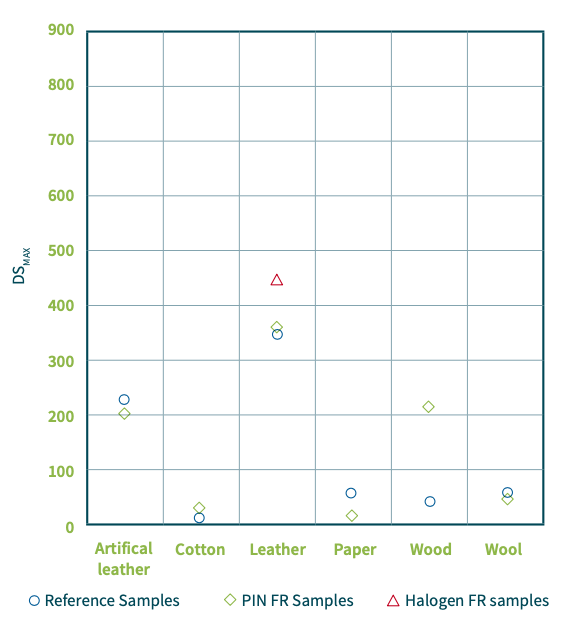
*来自pinfa
金属氢氧化物阻燃剂主要为三类:
ATH,氢氧化铝,aluminium hydroxide,Al(OH)3
AOH,勃姆石,aluminium-oxide-hydroxide,γ-AlOOH
MDH,氢氧化镁,magnesium hydroxide
阻燃机理如下
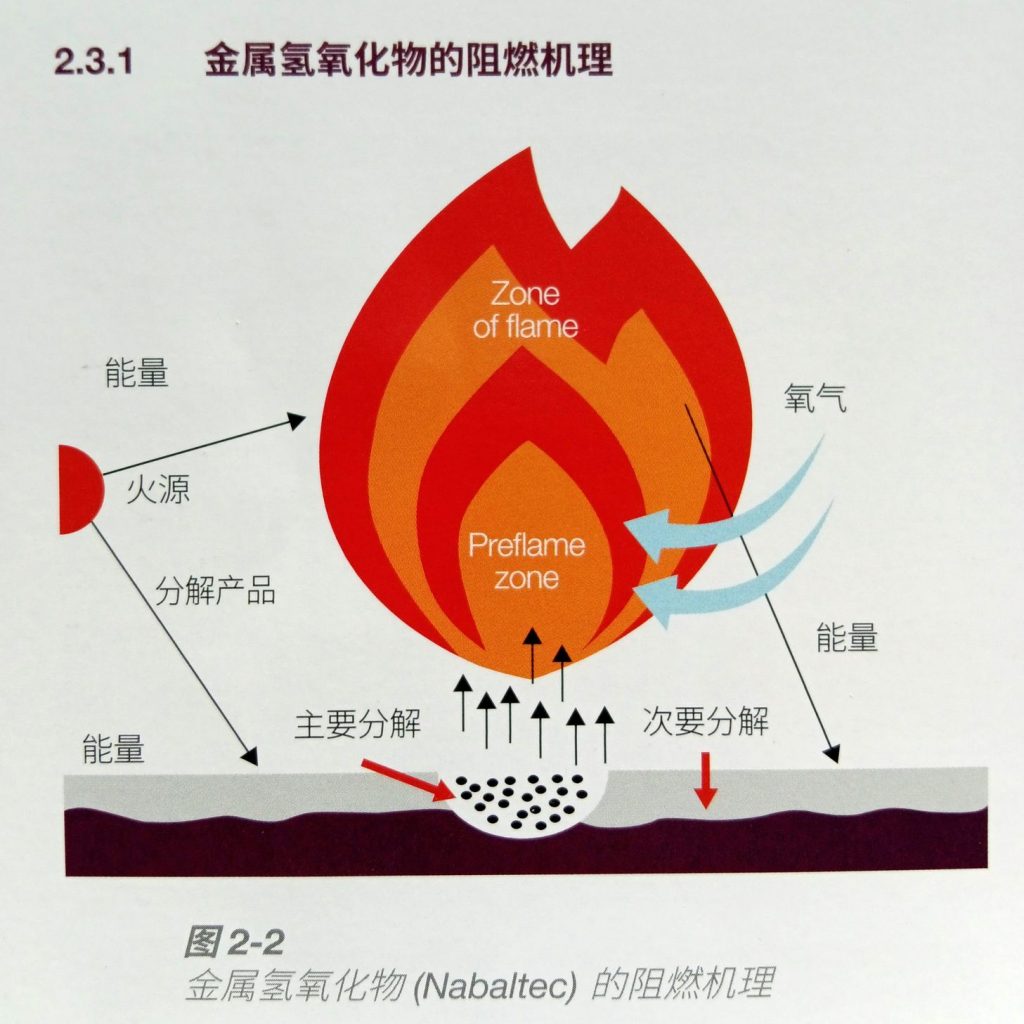
电气外壳常用的磷系阻燃剂:
Triphenyl phosphate (TPP) 磷酸三苯酯
Resorcinol bis (diphenyl phosphate) (RDP) 间苯二酚双(磷酸二苯酯)
Bisphenol A bis (diphenyl phosphate) (BDP) 双酚A双(磷酸二苯酯)
Resorcinol bis (2.6-dixylenyl hosphate) 间苯二酚双(2.6-二甲苯酚磷酸酯)
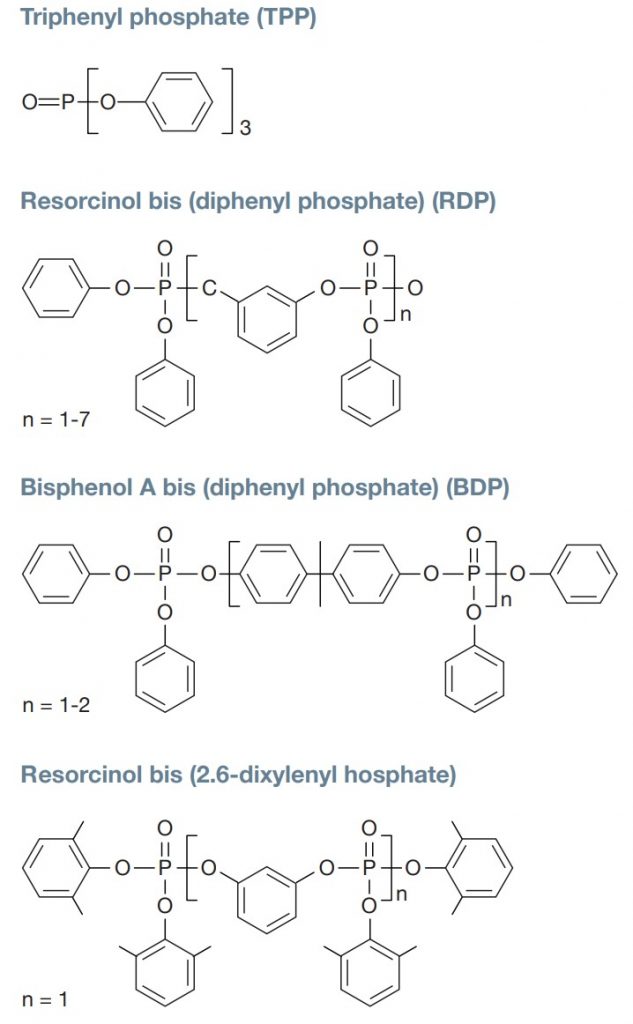
*来自 pinfa 氮磷无机阻燃剂